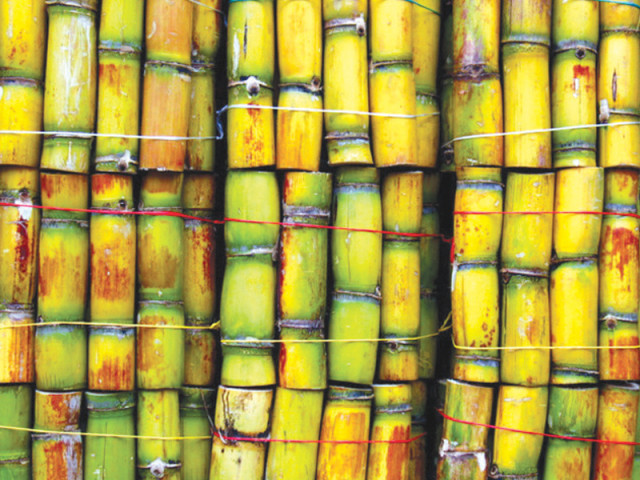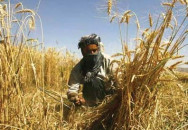Low prices discourage farmers from growing sugarcane next season
Prices of sugar likely to increase next year as a result of smaller crop.

Sugarcane prices have plummeted by as much as 40% in most districts across Punjab, forcing most small farmer to reconsider their decisions to plant sugarcane for the next season.
The price of sugarcane is loosely controlled by the government, but market forces can sometimes overtake the state’s mandated prices. For instance, during the 2011 season, the government had mandated a price of Rs3.125 per kilogramme, but a shortage of supply caused prices to shoot up to Rs6.25 per kilogramme.
“That [spike in prices] lured more growers to plant sugarcane. This led to a surplus production, which caused prices to come during the current season,” Tariq Chatta, a farmer near Faisalabad, told The Express Tribune.
For the current year, the government has set a price of Rs3.75 per kilogramme, but most farmers are unable to get this price from sugar millers. In addition, production costs have risen, which has further squeezed margins for most farmers.
Retail prices of sugar have reflected this change. Last year, prices of sugar across the country exceeded Rs80 per kilogramme. This year, prices have plummeted to an average of Rs52 per kilogramme. Sugar mill owners in turn complain that they have been giving farmers lower prices because of those lower prices of sugar.
Sugarcane is a twelve month crop, requiring more extensive commitment than most smaller landowners are able to give. Many have started growing vegetables, which tend to have a growing time of 60 days or less. Some farmers in Sindh have begun preferring cotton, which has begun to yield better margins.
“The larger landowners can still afford to plant sugarcane and many have even increased their production of it for the coming year,” said Ghulam Mustafa Chaniho, a farmer based of Khipro, in Sanghar district. “The smaller landowners cannot afford that twelve-month commitment.”
As a result of these decisions by farmers, next year’s sugarcane crop is likely to be significantly smaller than this year’s, which in turn will have an effect on the retail price of sugar, a politically sensitive commodity in a country that uses an obscene amount of sugar in its tea and has a high incidence of type-II diabetes.
One of the ways the government has kept prices low this year has been by banning the export of the surplus quantity of sugar that was produced in the country. While some of it was nonetheless smuggled abroad, the local market did face a glut that was reflected in the lower prices.
This constant seesaw in farmers responding to last year’s prices can be removed by having an effective market for agricultural commodity futures. Indeed, it was to alleviate this problem that the Chicago Board of Trade (now part of the CME Group) was founded in 1848 in the United States. It allowed farmers and buyers of crops to exchange legally binding contracts for the coming year’s crop, which allowed farmers the ability to plan more effectively.
The Pakistan Mercantile Exchange has been pursuing the establishment of such a market, but has yet to make much headway in anything besides gold and oil. And given the high level of government interference, it is not planning on even starting trading in sugar futures.
Published in The Express Tribune, March 13th, 2012.



















COMMENTS
Comments are moderated and generally will be posted if they are on-topic and not abusive.
For more information, please see our Comments FAQ